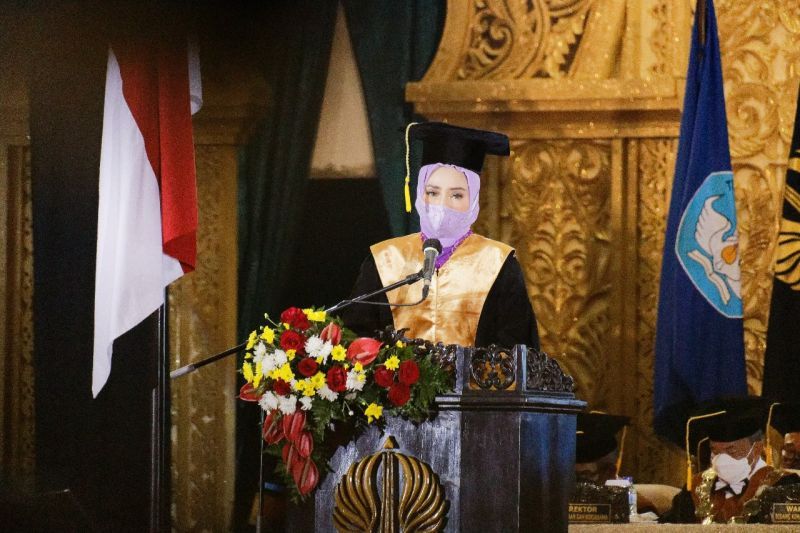"World Water Day 2022, Here are the Strategies to Address the Water Crisis According to UNESA Professor."

Unesa.ac.id, SURABAYA—The water crisis is becoming a serious threat and must be a shared concern. In the Technocratic Draft of the National Medium-Term Development Plan 2020-2024 issued by the Ministry of National Development Planning (Bappenas), water scarcity in Java, Bali, and Nusa Tenggara is expected to increase. Additionally, water quality will continue to decline drastically. The Meteorology, Climatology, and Geophysics Agency (BMKG) has warned about the impact of climate change on the availability of clean water in Indonesia.
According to Professor Dr. Erina Rahmadyanti, M.T., a Professor of Environmental Health Engineering at UNESA, this water scarcity is a serious threat to human survival. Therefore, it needs to be a concern for all parties. World Water Day, March 22, 2022, should be a momentum to foster collective awareness in viewing, utilizing, and addressing water availability.
Moreover, this year's World Water Day theme, "Groundwater, Making the Invisible Visible," indirectly invites us to protect groundwater from increasing exploitation. "This is a serious threat and a global concern," she said.
Impact of the Water Crisis
The professor, who was inaugurated at the end of last year, added that water scarcity is increasing along with deforestation, urbanization, pollution, and global warming. As a result, one-third of all schools worldwide do not have access to clean water and adequate sanitation. Half of the hospitals are filled with patients suffering from waterborne diseases or poor sanitation.
Two-thirds of the world's population live with contaminated water conditions. 1.8 billion people experience water scarcity. Every 90 seconds, a child dies from diarrhea, and the number is expected to increase year by year, with one-tenth of people lacking access to clean water.
"In 2015, of the 564 rivers that are potential sources of 6% of the world's clean water, about 58% were polluted," she explained.
According to Bappenas data, she continued, 31% of child deaths in Indonesia are caused by diarrhea and waterborne diseases. About 80 million people in Indonesia do not have access to clean water. So how do we address water scarcity in Java and Indonesia in general?
Solutions to the Crisis
According to her, there are several ways that can be done, including constructed wetlands (CW) as green infrastructure, which in its implementation for water availability can use rainwater harvesting strategies and on-site wastewater treatment. CW is one of the cheap and easy ways to maintain water availability in Indonesia sustainably.
"This is a research topic I have been working on and presented in my inaugural professor's speech last December," she explained.
In addition, there should also be other efforts, such as good governance of industrial areas and green and forest areas. This also relates to regulations and their implementation in the field. At the grassroots level, public awareness in utilizing water is also necessary.
A water-saving culture, from household to industrial scale, as part of efforts to balance the water availability balance, is very much needed. "Happy World Water Day 2022, may we be part of those who love and are aware of a healthy and clean environment, including caring about the availability of clean water," said the professor from the Faculty of Engineering. [Public Relations UNESA]
Share It On: